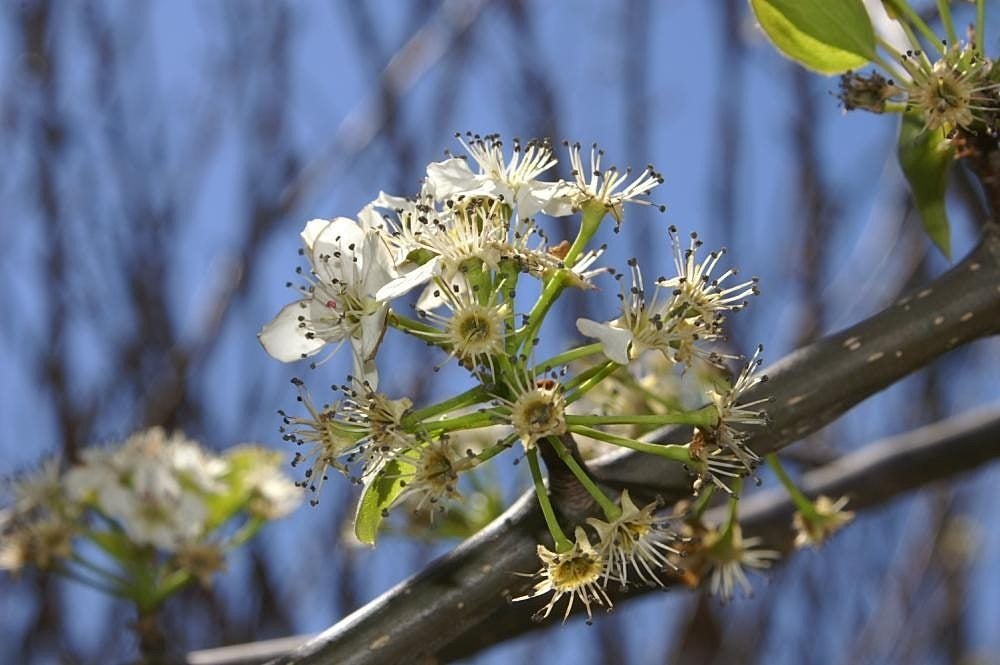Redspire Pear Tree Care: Tips For Growing Redspire Pears


Callery 'Redspire' pears are fast-growing ornamentals with narrow crowns. They offer large, white blossoms in spring; pretty, purple new leaves; and flaming, fall color. Read on for additional Redspire pear information as well as tips on Redspire pear tree care.
Redspire Pear Information
‘Redsire’ is an attractive Callery pear cultivar. Its large, showy blossoms are larger than other ornamental pear flowers and are a dramatic, snowy white. Callery ‘Redspire’ pears are deciduous trees, losing their foliage in winter. New leaves grow in a deep purple. They mature to glossy green with a hint of red, then light up your garden in the autumn as they turn yellow, purple, and crimson. Fall color is even better in the southernmost regions. If you start growing Redspire pears, you’ll find that the fruits are small pomes, about the size of peas, and reddish brown in color. This fruit hangs on the tree into winter, serving as food for birds and other wildlife. These trees shoot up rapidly with a columnar or narrowly round growth habit. They can get to 40 feet (12 m.) tall with a spread up to 20 feet (6 m.). The branches on Callery ‘Redspire’ pears grow out and up. They are completely thornless and never droop or dip at the tips.
How to Grow a Redspire Pear Tree
The trees thrive in USDA plant hardiness zones 5 through 9a. When you start growing Redspire pears, select a planting location that gets full sun for the best results. This cultivar accepts many different kinds of soil, everything from sand to clay. It will grow in acidic or alkaline soil and tolerates both wet and well-drained soil. Since the tree is so tolerant of site location, you’ll find that its maintenance is mostly a matter of after-planting care. Although the tree’s drought tolerance is high once its root system is established, you’ll want to provide generous irrigation until that time. Pruning may be an essential part of Redspire pear tree care. Trim out branches with weak crotch connections to help the tree develop a strong structure. Callery ‘Redspire’ pears have pretty good resistance to fire blight, oak root fungus, and verticillium. They can be susceptible to whitefly and sooty mold, however.
Sign up for the Gardening Know How newsletter today and receive a free copy of our e-book "How to Grow Delicious Tomatoes".

Teo Spengler is a master gardener and a docent at the San Francisco Botanical Garden, where she hosts public tours. She has studied horticulture and written about nature, trees, plants, and gardening for more than two decades, following a career as an attorney and legal writer. Her extended family includes some 30 houseplants and hundreds of outdoor plants, including 250 trees, which are her main passion. Spengler currently splits her life between San Francisco and the French Basque Country, though she was raised in Alaska, giving her experience of gardening in a range of climates.